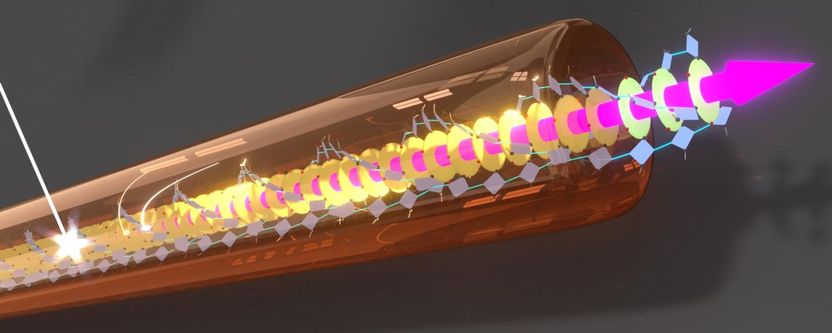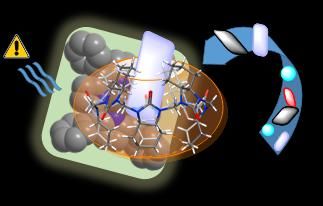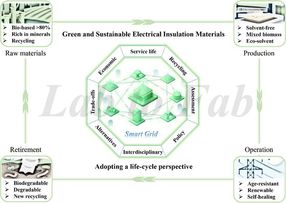Novel nanostructures for efficient long-range energy transport
Advertisement
The conversion of sunlight into electricity at low cost becomes increasingly important to meet the world's fast growing energy consumption. This task requires the development of new device concepts, in which particularly the transport of light-generated energy with minimal losses is a key aspect. An interdisciplinary group of researchers from the Universities of Bayreuth and Erlangen-Nuremberg (Germany) report on nanofibers, which enable for the first time a directed energy transport over several micrometers at room temperature. This transport distance can only be explained with quantum coherence effects along the individual nanofibers.

This is a supramolecular nanofiber consisting of more than 10,000 perfectly ordered building blocks, which enables an energy transport over a distance of more than 4 micrometers at room temperature
Picture by A. T. Haedler
The research groups of Richard Hildner and Hans-Werner Schmidt at the University of Bayreuth prepared supramolecular nanofibers, which can comprise more than 10,000 identical building blocks. The core of the building block is a so-called carbonyl-bridged triarylamine. This triarylamine derivative was synthesized by the research group of Milan Kivala at the University of Erlangen-Nuremberg and chemically modified at the University of Bayreuth. Three naphthalimidbithiophene chromophores are linked to this central unit. Under specific conditions, the building blocks spontaneously self-assemble and form nanofibers with lengths of more than 4 micrometers and diameters of only 0.005 micrometer. With a combination of different microscopy techniques the scientists at the University of Bayreuth were able to visualize the transport of excitation energy along these nanofibers. To achieve this long-range energy transport, the triarylamine cores of the building blocks, that are perfectly arranged face to face, act in concert. Thus, the energy can be transferred in a wave-like manner from one building block to the next: This phenomenon is called quantum coherence.
"These highly promising nanostructures demonstrate that carefully tailoring materials for the efficient transport of light energy is an emerging research area" says Dr. Richard Hildner, an expert in the field of light harvesting at the University of Bayreuth.




























































